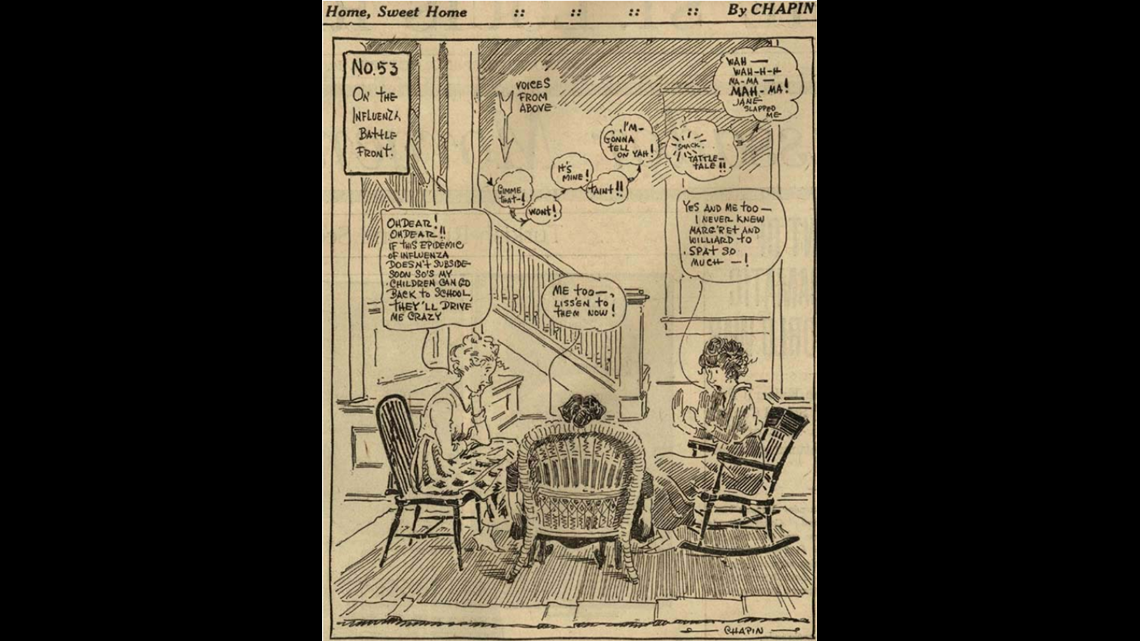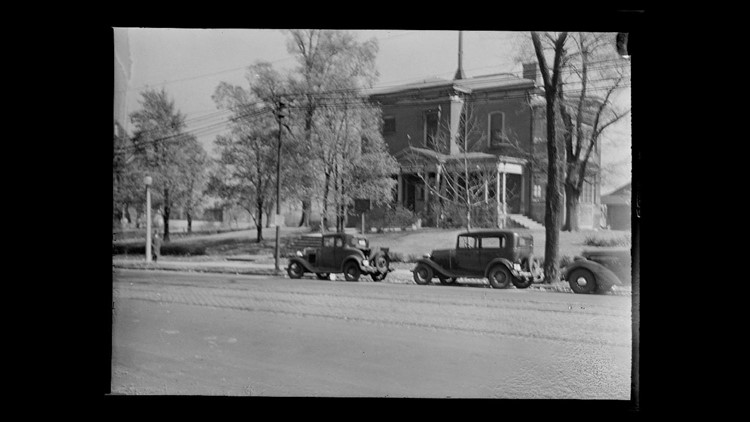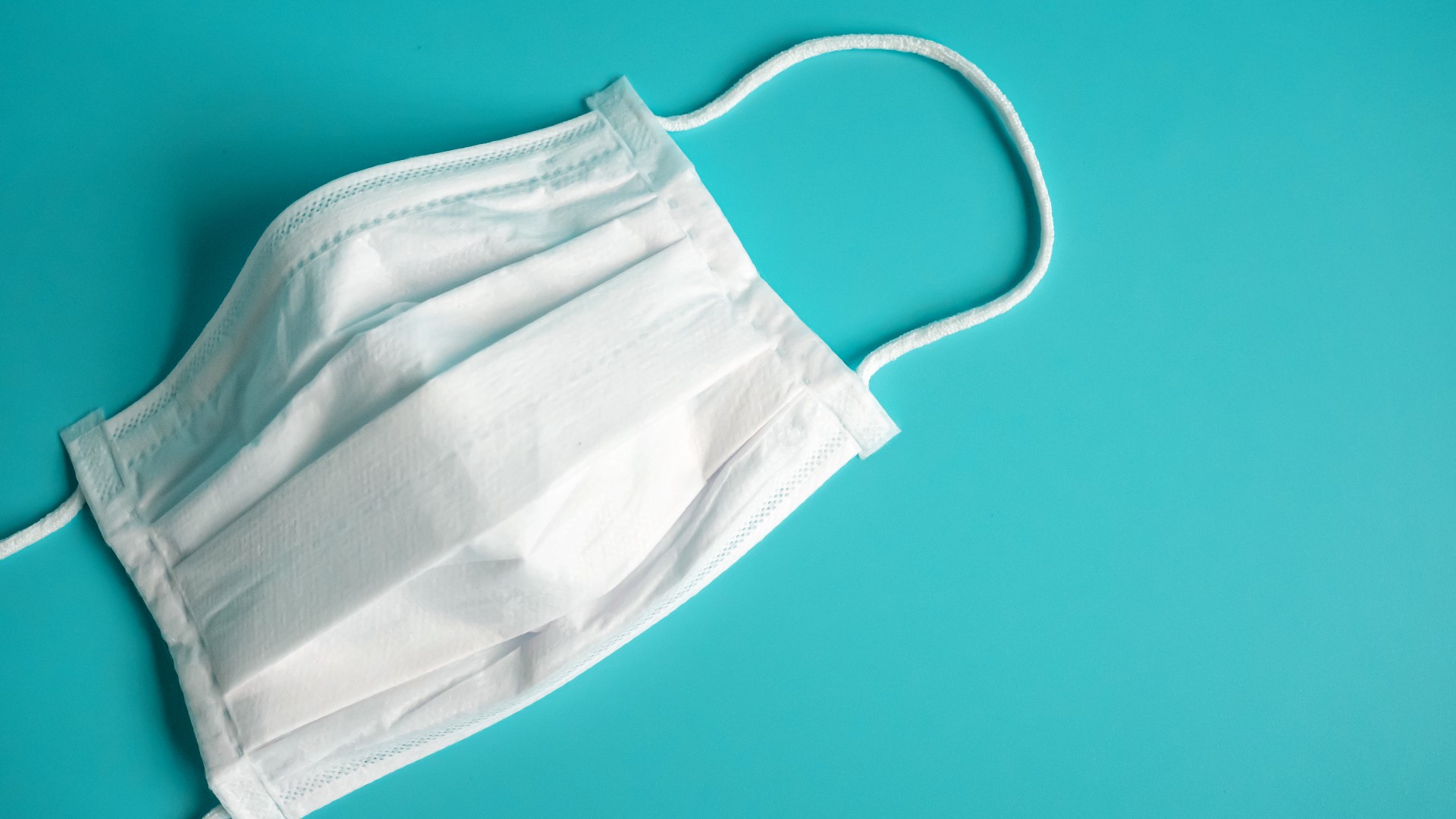ST. LOUIS — As St. Louis schools and families decide how to keep kids safe and learning during the coronavirus pandemic, their concerns echo those of the city and schools 100 years ago.
In 1918, St. Louis became a hotspot of Spanish Influenza starting at Jefferson Barracks. Cases in the city were diagnosed early in October. By the end of the year, influenza had killed more than 530 people for every 100,000 residents in St. Louis.
The influenza pandemic of 1918 burned through St. Louis in two waves, with the second killing more than the first. But it set the standard for how American cities respond to pandemics. Social distancing, stay-at-home orders, and school closures are all lessons learned from just three months of the Spanish Flu.
“The two waves of influenza came and left fairly quickly, especially compared to our current situation,” wrote Mikall Venso, military and firearms curator for the Missouri Historical Society.
The pandemic hit St. Louis at a time when World War I had already reshaped the city’s schools, according to the Board of Education’s annual report for 1918 and 1919. Saint Louis Public Schools had expanded its evening classes to reach more adults, including teaching women who were being asked to take over jobs previously occupied by men.
The district had a thriving home and community garden program, offered reduced-price lunches through partnerships with the Children’s Lunch Association and the Women’s Jewish Council, and opened its first dental clinic for students of color.
At the busiest part of the school year, SLPS had a total enrollment of 91,629 students. Looking to the future, the district expected to soon expand with nine new elementary buildings, seven new junior high schools, and a new senior high school, plus expansions on existing buildings. The estimated cost of all the new space reached $5.5 million in 1919 or about $86 million in 2020 dollars.
When the first cases of influenza were reported in St. Louis, SLPS Division of Hygiene supervisor Dr. James Stewart met with the city’s health commissioner, Dr. Max Starkloff. In his annual report to the district, Stewart wrote:
“After considerable debate on this problem, the question of closing the Public Schools was taken up. The Supervisor argued before the Committee of Advisors of the Health Commissioner against it, stating that school attendance had not been lessened, that very few children of school age were suffering from this disease, that the school buildings were conducive to good health, that physicians and school nurses visited each school every day, and could keep the children under daily inspection, and that children kept in the schools a great part of the day were thereby kept off of the streets and away from infection.”
But four days after the first civilian cases of influenza appeared in the city, Starkloff and his committee ordered for the city to shut down, including schools. The first closure affected the schools from October 8 through November 13. The city health department and the Red Cross requested school nurses to be assigned to Jefferson Barracks and the city’s hospitals.


“The cases of influenza continued to increase in such numbers that the City Hospital and Infectious Hospital were overcrowded; as many as three persons to a bed. The private hospitals would accept only a certain number of influenza cases,” wrote Stewart.
On October 18, the school board decided to offer something else to the pandemic response effort. It had been operating several “open-air” schools, designed to help students with tuberculosis or those who were considered at risk of tuberculosis. These schools offered classes outside or in environments with more airflow, with an emphasis on hygiene. The open-air schools were associated with improved health and growth for their students, which led SLPS to found its first residential open-air school in 1918. During the epidemic, officials noted there were even a few cases of influenza among the students at the open schools.
With children out of school, the school board offered to convert Taussig Open Air School at 1540 S. Grand Boulevard into an emergency hospital.
Stewart wrote:
“On October 19th at 12:30 A.M. or twenty-four hours after the proposition was accepted by the Hospital Commissioner, we received our first influenza patient; a white male via city ambulance and before twelve hours had passed we had received seventy-two patients, men, women and children, both black and white. At the end of the first twenty-four hours, we had received 142 cases.”
Nurse’s aides from the American Red Cross and some of the school teachers offered assistance. When cases declined at the end of the first wave, Taussig was fumigated and scrubbed. It became a school again within 48 hours.
Class was in session for just a couple weeks before the second wave arrived. “The epidemic took on new life and more cases were reported than in the beginning. The schools were closed again, and the Hospital Commissioner asked us to open the school hospital again,” wrote Stewart. Taussig became a hospital again on December 3, with more nurses and aides this time. The neighboring Special School No. 7 at 1520 S. Grand Ave. was converted into temporary housing for the nurses. When the hospital closed again on December 23, there were fewer than 50 new cases of influenza each day. All of the health department’s restrictions were lifted on December 28.
According to Stewart, “During the eight weeks this school was conducted as a hospital, it took care of 513 patients with 35 deaths. In this number there were 164 soldiers from the Marne Barracks. They all recovered completely.”
Across the district, St. Louis schools each lost between 32 and 45 days of instruction in the first half of the year. “In addition to the loss when the schools were not in session, school work was much interfered with by absence of pupils due to the contagion before the closing and also due to anxiety caused by the ‘flu’ situation,” wrote Henry Wolfner, president of the Board of Education. For the rest of the school year, class hours were extended and teachers emphasized the “more essential parts of the curriculum.”
The annual report shows that 20 school employees died during the 1918-1919 school year, more than in the school years before or after. The district experienced a teacher shortage at the same time, attributed to higher salaries in other industries. By November 19, the school board had approved bonuses of up to $100 ($1,562 in 2020 dollars) and salary increases of $150 to $375 (up to $5,900 in 2020 dollars). After the epidemic passed, the Board asked for a special election to raise more funds through a tax increase, but were discouraged by other city authorities.
“My research indicates that there was little resistance to school closures for a few reasons,” wrote Venso, the first reason being the speed of the disease. “The second wave came between Thanksgiving and Christmas/New Year’s when schools were not typically in session for many days. Perhaps most importantly, the 1918 influenza was unlike previous influenzas which tended to impact the elderly and the very young more significantly. In 1918, young, healthy individuals were impacted more than other ages and it was quite deadly for those who contracted it.”
At the end of his annual report, Wolfner summarized the importance of making decisions for the students’ health in strong terms:
“Every child of the city must have that which is only justice to him, a seat in a comfortable, hygienic, and pleasant school room and an adequate space for play.”



